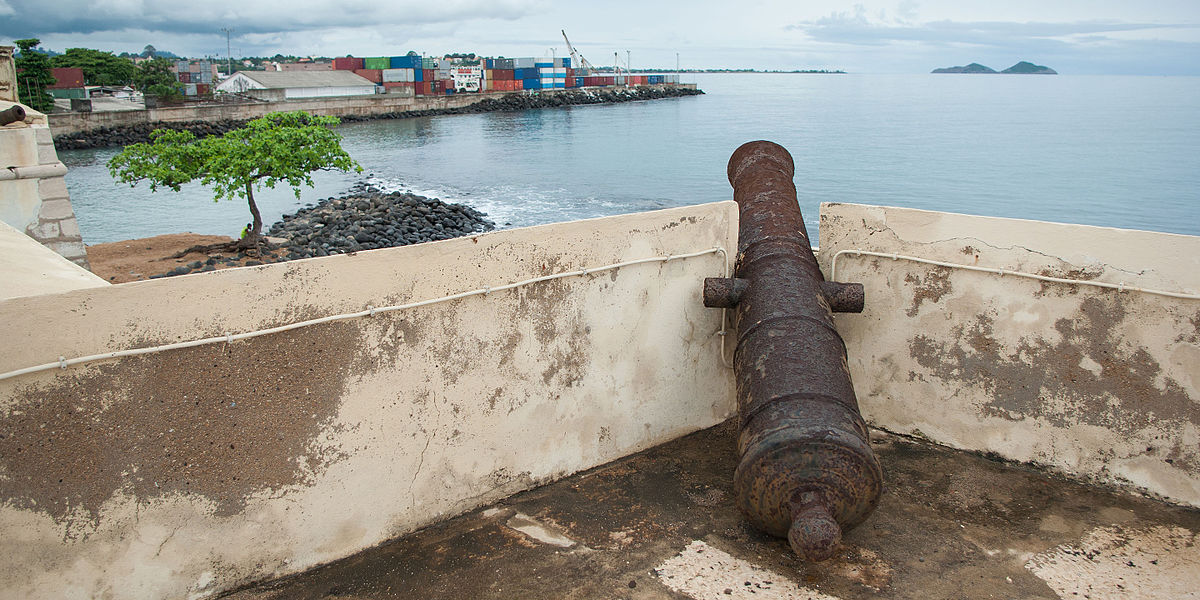
São Tomé’s Forte de São Sebastião National Museum. Photo credit: Wikimedia/Helena Van Eykeren (CC BY 2.0)
KEY FACTS
Freedom House Rating
Free
Government Type
Semi-Presidential Republic
Population
211,000 |
UPCOMING ELECTIONS
Presidential Election
July 2021 (due)
Parliamentary and Local Elections
October 2022 (due) |
PAST ELECTIONS
Parliamentary and Local Elections
October 7, 2018
Presidential Election
July 17, 2016 (Second round: August 7, 2016) |
São Tomé and Príncipe is due to hold a presidential election in July 2021.
Political Context
Since the end of Marxist one-party rule in 1991, São Tomé and Príncipe has held regular elections with peaceful transfers of power. In the country’s semi-presidential system, the prime minister heads the government and holds most executive power. Conversely, the president is the head of state.
Currently the two biggest parties are the formerly Marxist and currently center-left Movement for the Liberation of São Tomé and Príncipe/Social Democratic Party (MLSTP/PSD), which governed the country from independence in 1975 until the establishment of a multiparty system in 1991, and the centrist Independent Democratic Action (ADI).
Following the 2018 parliamentary elections, ADI – at the time the incumbent governing party – won the most seats but lost its majority, and was not able to put together a government. Instead, bloc led by MLSTP/PSD, in coalition with a smaller block – the Democratic Convergence Party, the Union of Democrats for Citizenship and Development, and the Force for Democratic Change Movement (PCD-UDD-MDFM) – formed a new coalition government, with MLSTP/PSD’s Jorge Bom Jesus becoming prime minister.
The current president, Evaristo Carvalho from ADI, defeated the incumbent Manuel Pinto da Costa from MLSTP/PSD, in the 2016 election. Carvalho won the most votes in the first round, but not a majority. However, da Costa boycotted the second round, handing the election to Carvalho. Although da Costa alleged irregularities, international observers found the vote to generally be free and fair.
Geopolitical Context
São Tomé and Príncipe, an archipelago in the Gulf of Guinea, remained uninhabited until the 15th century, when it became a hub for the transatlantic slave trade. The country is now a producer of cocoa, and seeking to develop the energy and tourism sectors (although COVID-19 has thrown a wrench in that).
Curated News and Analysis
Óscar Medeiros, VOA (February 15, 2021 – in Portuguese): Sao Tome and Principe: Enactment of electoral law divides politicians
21votes does not necessarily agree with all of the opinions expressed in the linked articles; rather, our goal is to curate a wide range of voices. Furthermore, none of the individuals or organizations referenced have reviewed 21votes’ content, and their inclusion should not be taken to imply that they endorse us in any way. More on our approach here.
Updated February 16, 2021
Related
São Tomé and Príncipe Presidential Election: July 2021 (due)
Leave a Comment
Last Updated: February 16, 2021 by 21votes
São Tomé’s Forte de São Sebastião National Museum. Photo credit: Wikimedia/Helena Van Eykeren (CC BY 2.0)
Freedom House Rating
Free
Government Type
Semi-Presidential Republic
Population
211,000
Presidential Election
July 2021 (due)
Parliamentary and Local Elections
October 2022 (due)
Parliamentary and Local Elections
October 7, 2018
Presidential Election
July 17, 2016 (Second round: August 7, 2016)
São Tomé and Príncipe is due to hold a presidential election in July 2021.
Political Context
Since the end of Marxist one-party rule in 1991, São Tomé and Príncipe has held regular elections with peaceful transfers of power. In the country’s semi-presidential system, the prime minister heads the government and holds most executive power. Conversely, the president is the head of state.
Currently the two biggest parties are the formerly Marxist and currently center-left Movement for the Liberation of São Tomé and Príncipe/Social Democratic Party (MLSTP/PSD), which governed the country from independence in 1975 until the establishment of a multiparty system in 1991, and the centrist Independent Democratic Action (ADI).
Following the 2018 parliamentary elections, ADI – at the time the incumbent governing party – won the most seats but lost its majority, and was not able to put together a government. Instead, bloc led by MLSTP/PSD, in coalition with a smaller block – the Democratic Convergence Party, the Union of Democrats for Citizenship and Development, and the Force for Democratic Change Movement (PCD-UDD-MDFM) – formed a new coalition government, with MLSTP/PSD’s Jorge Bom Jesus becoming prime minister.
The current president, Evaristo Carvalho from ADI, defeated the incumbent Manuel Pinto da Costa from MLSTP/PSD, in the 2016 election. Carvalho won the most votes in the first round, but not a majority. However, da Costa boycotted the second round, handing the election to Carvalho. Although da Costa alleged irregularities, international observers found the vote to generally be free and fair.
Geopolitical Context
São Tomé and Príncipe, an archipelago in the Gulf of Guinea, remained uninhabited until the 15th century, when it became a hub for the transatlantic slave trade. The country is now a producer of cocoa, and seeking to develop the energy and tourism sectors (although COVID-19 has thrown a wrench in that).
Curated News and Analysis
Óscar Medeiros, VOA (February 15, 2021 – in Portuguese): Sao Tome and Principe: Enactment of electoral law divides politicians
21votes does not necessarily agree with all of the opinions expressed in the linked articles; rather, our goal is to curate a wide range of voices. Furthermore, none of the individuals or organizations referenced have reviewed 21votes’ content, and their inclusion should not be taken to imply that they endorse us in any way. More on our approach here.
Updated February 16, 2021
Share this:
Related
Category: Overview Tags: São Tomé and Príncipe